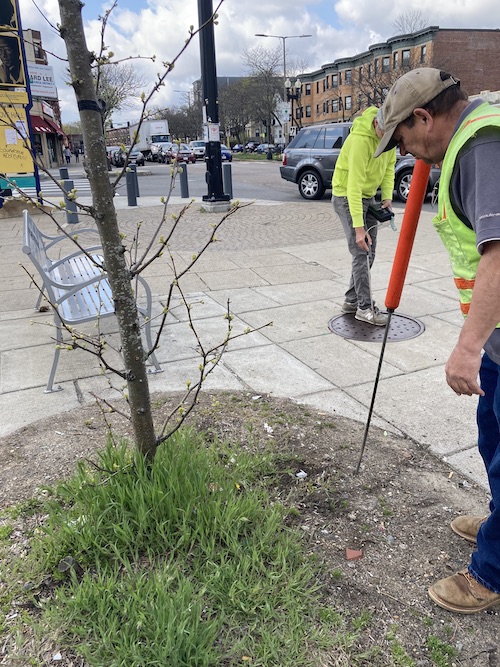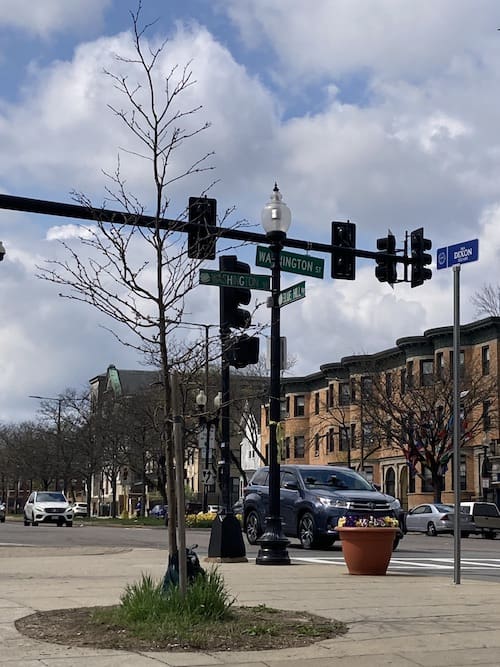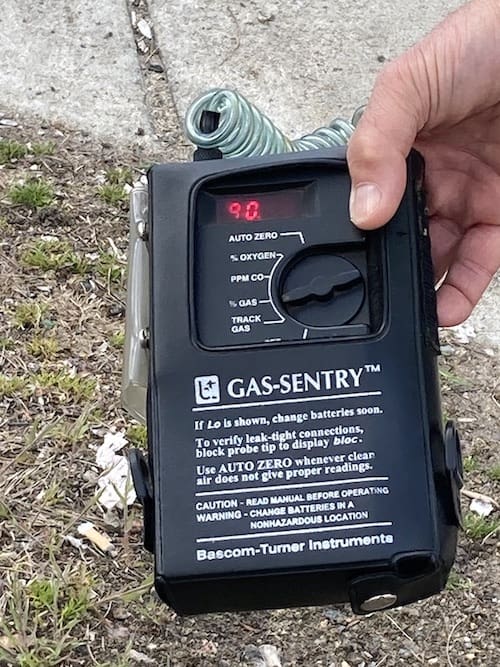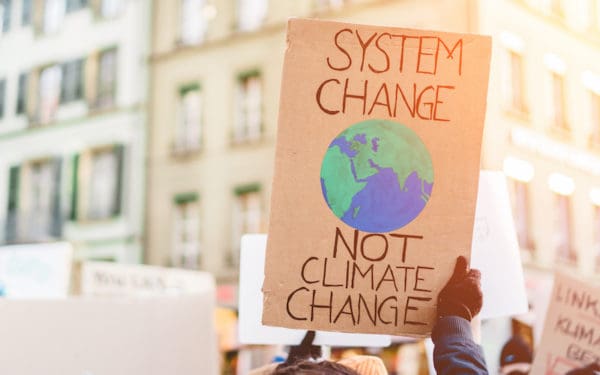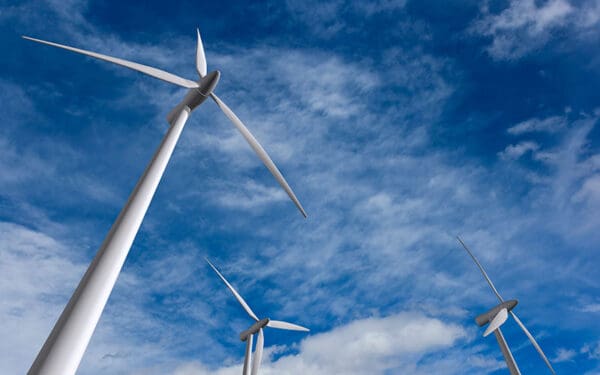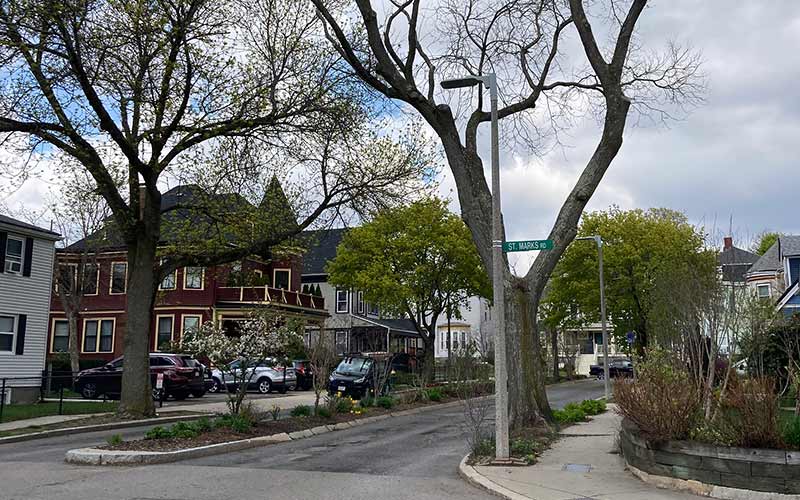
An unhealthy tree, adjacent to a gas main, struggles to survive.
Imagine walking down a street on a scorching day. The sun is blistering hot. The air is thick and heavy. Pavement and asphalt soak up all that heat and reflect it back, making the heat feel even worse.
If you live in a neighborhood with trees, you might feel better. They provide shade and help cool the air. But in areas with few trees, your only escape might be to retreat indoors to blast the air conditioner.
It turns out that trees are an instrumental tool in helping us cope with the impacts of climate change. But they provide us with benefits beyond just shade. They produce oxygen, filter pollution, protect us from wind, and provide aesthetic value contributing to our well-being.
They are vital in urban areas because they cool city neighborhoods when a searing sun heats sidewalks, roads, buildings, and parking lots. Trees cool the air not just by providing cover from the sun but through transpiration—which releases water vapor from their leaves—keeping temperatures more comfortable for all of us.
But here’s an alarming fact: Our trees are in jeopardy because of methane leaks into soil from natural gas pipes.
And that has serious ramifications for human health and the climate, especially in lower-income and communities of color, which often have fewer trees to begin with.
Trees Reduce Deadly “Heat Island Effect”
Pavement, asphalt, and concrete warmed by the sun absorb and emit higher concentrations of heat in what is known as heat island effect. Trees, on the other hand, deflect heat. In city neighborhoods without many trees, known as heat islands, temperatures during the day can easily register one to seven degrees higher than in areas with more trees.
The heat island effect can also lead to higher air pollution and climate-damaging emissions, worsening conditions like asthma and other respiratory illnesses. Residents in these areas also need to use more energy to cool their homes, which leads to higher electricity bills. As the climate continues to warm, these problems will become even more serious.
New England is not immune to the heat island effect. A research study published in 2021 found that three New England cities—Boston, Providence, and Burlington, Vermont—ranked within the top 20 hottest heat islands in the U.S.
Tree disparity is also seen in New England cities like Manchester, New Hampshire, where lower-income neighborhoods and residents of color endure less tree cover than predominantly white neighborhoods. Such disparities are unacceptable. And methane leaks threaten to make them worse.
The Problem with Natural Gas
In 2022, 46% of New England’s energy resources came from natural gas. Gas is primarily made up of methane—a more potent greenhouse gas than even carbon dioxide. And the highest source of methane emissions in New England is the natural gas system that powers and heats our region’s homes and businesses.
In New England, this is a considerable problem because many of the gas pipes snaking under our streets were installed before 1970—and one in four were installed before 1940. Older, wrought iron lines are especially prone to breakage and methane leaks. While most of these leaks would not necessarily result in a gas explosion, they still present hazards, particularly to vegetation and our climate.
How Gas Leaks Suffocate Trees
Multiple studies show a link between poor tree health and exposure to elevated methane levels in the soil. National Grid—which provides gas to Massachusetts and New York—has cited dying vegetation as evidence of a gas leak. This is because elevated methane levels in the soil result in lower oxygen levels. The depletion of oxygen in the ground limits the amount of oxygen a tree can absorb through its roots. Without enough oxygen, trees suffocate to death.
In a 2020 study in Chelsea, Massachusetts, researchers tested methane concentrations in the soil around 84 dead or dying trees and 97 healthy trees. The study found that, on average, the dead or dying trees had 30 times greater odds of being exposed to methane than the healthy trees. The results also saw the highest concentrations of methane in soil located closest to the street–where natural gas mains are typically installed. The study concluded that there was a quantified association between methane exposure and dead street trees.
This study was especially significant because Chelsea is an environmental justice community in which 78.9% of the population identifies as a racial or ethnic minority, and about 24% live below the poverty line. Most of the city is also a designated heat island. Communities like Chelsea face disproportionate environmental injustices and health impacts, making the need for healthy shade trees and their benefits even more crucial.
What Can Be Done?
CLF is currently investigating how methane leaks from gas mains affect trees in local communities, and you can get involved, too. While some New England states, such as Massachusetts, have legislation to protect public shade trees, it’s important to urge your legislature to specifically address the harm to trees by methane leaks.
You can also support organizations that work to preserve the urban tree canopy, such as Speak for the Trees and GreenRoots. Some cities and towns, like Boston, provide tips for residents on how they can care for street trees in their community. In Providence, neighborhood groups work to plant and steward new trees, and the City of Hartford provides free trees in areas without them.
As climate change causes global temperatures to rise, shade trees become even more critical. With your help, we can protect these trees and make New England a cooler and safer place to live.


